Palletizing By Clients From DB
In this example, we will work with product and shipment data to show how to use the improved standard pallet features in Quick Pallet Maker. QPM now allows the user to save full pallets in the way they will be shipped to customers, who may want configurations not available in the default box shipment calculation.
In a previous example, we configured the SKUs and the pallets so that we could reuse the data frequently for box shipments. Therefore, in this example we will start from the box window by choosing File -> New Data Sheet -> Box on Pallet.

If the predetermined units are not selected correctly, we can change them by right-clicking the text at the bottom-right of the window and choosing the ones we will use. In this case it's cm/kg.
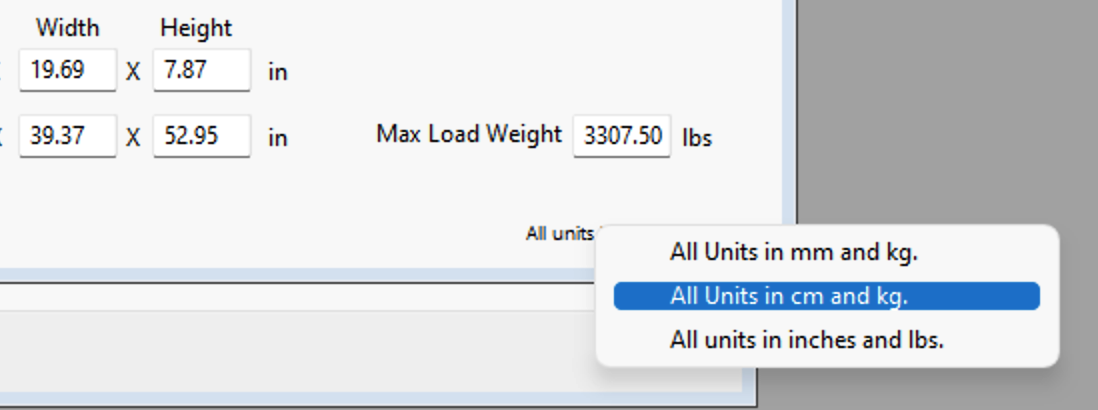
The next step is to load the data by using File -> Insert... -> Shipment.
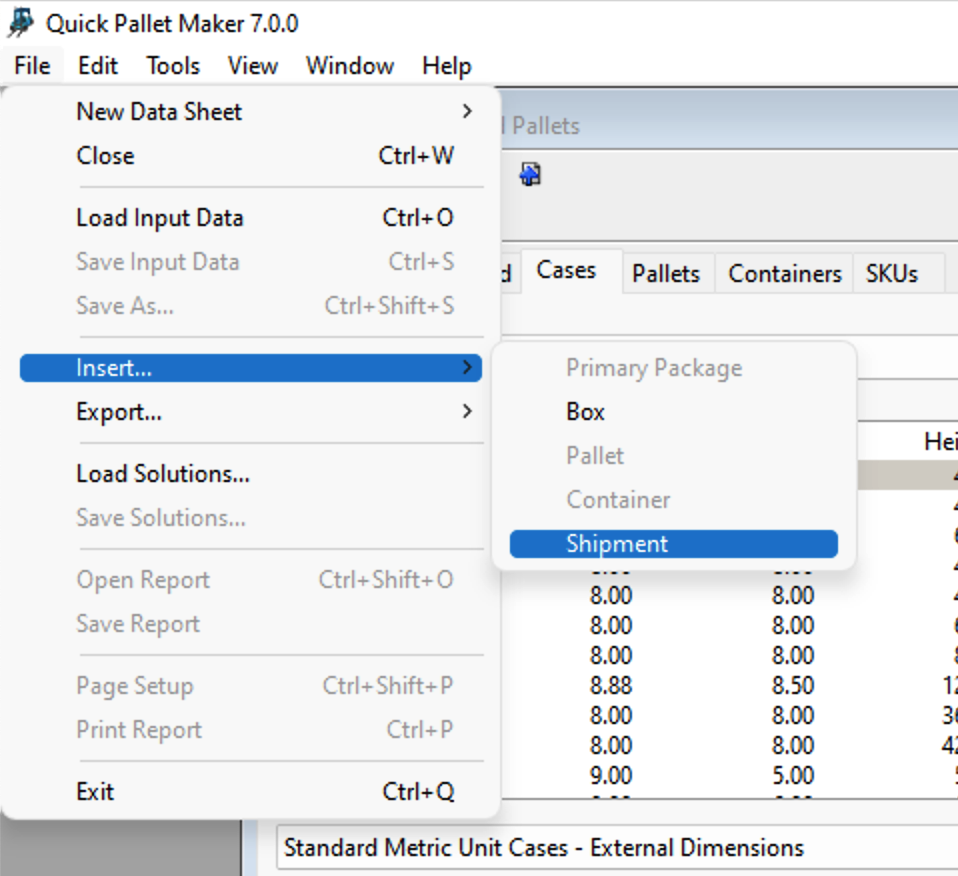
This will prompt us to look for the shipment file, which is delimited with commas (CSV). We select the file and continue. The example file can be downloaded through this link.
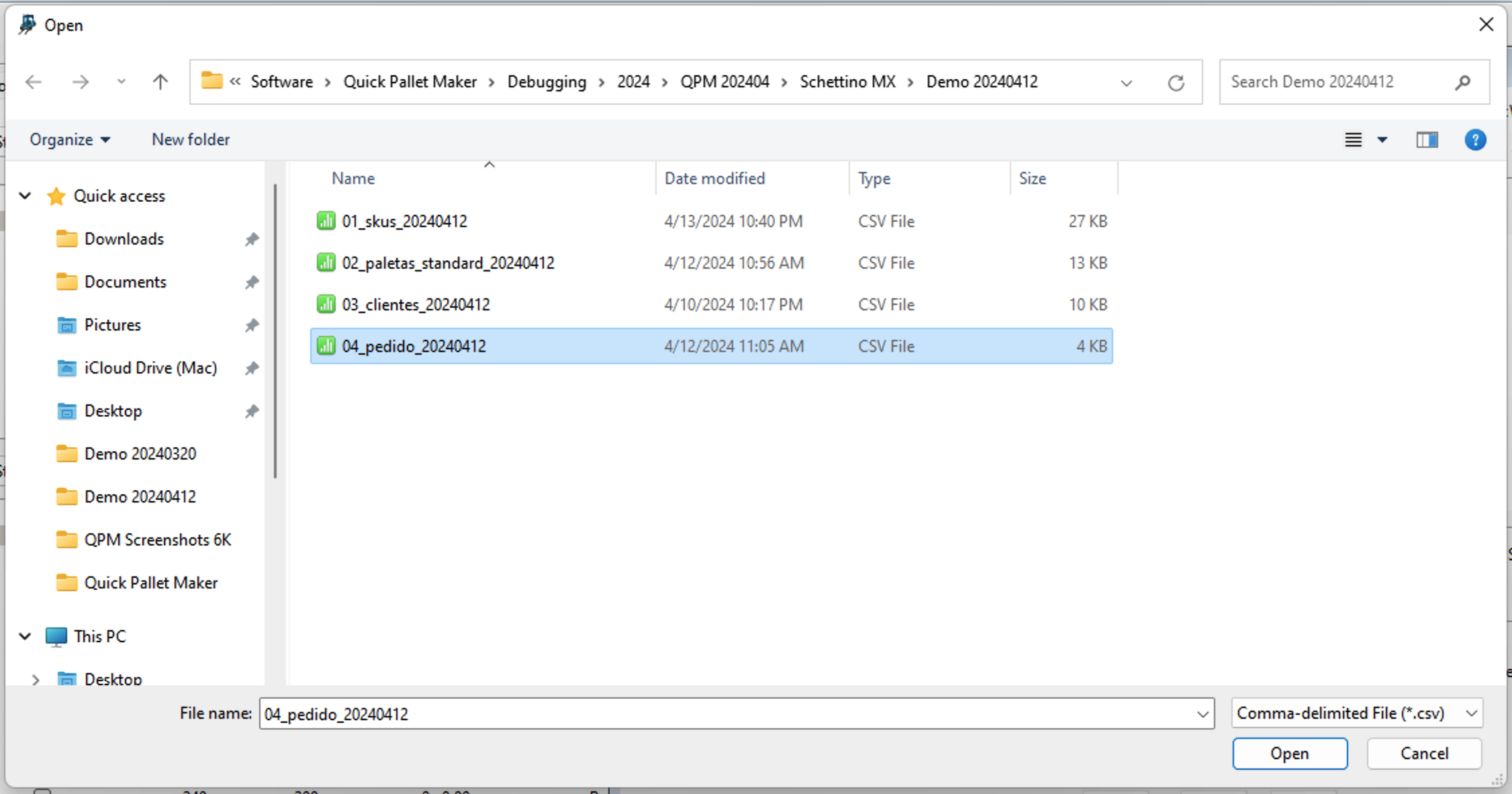
If all goes fine, we should see the list of boxes in the central table of the window. The next step is to select which filter we will use. In this case, it will be the Client ID. A pull-down menu will appear, in which we will select Sort by: Client ID.
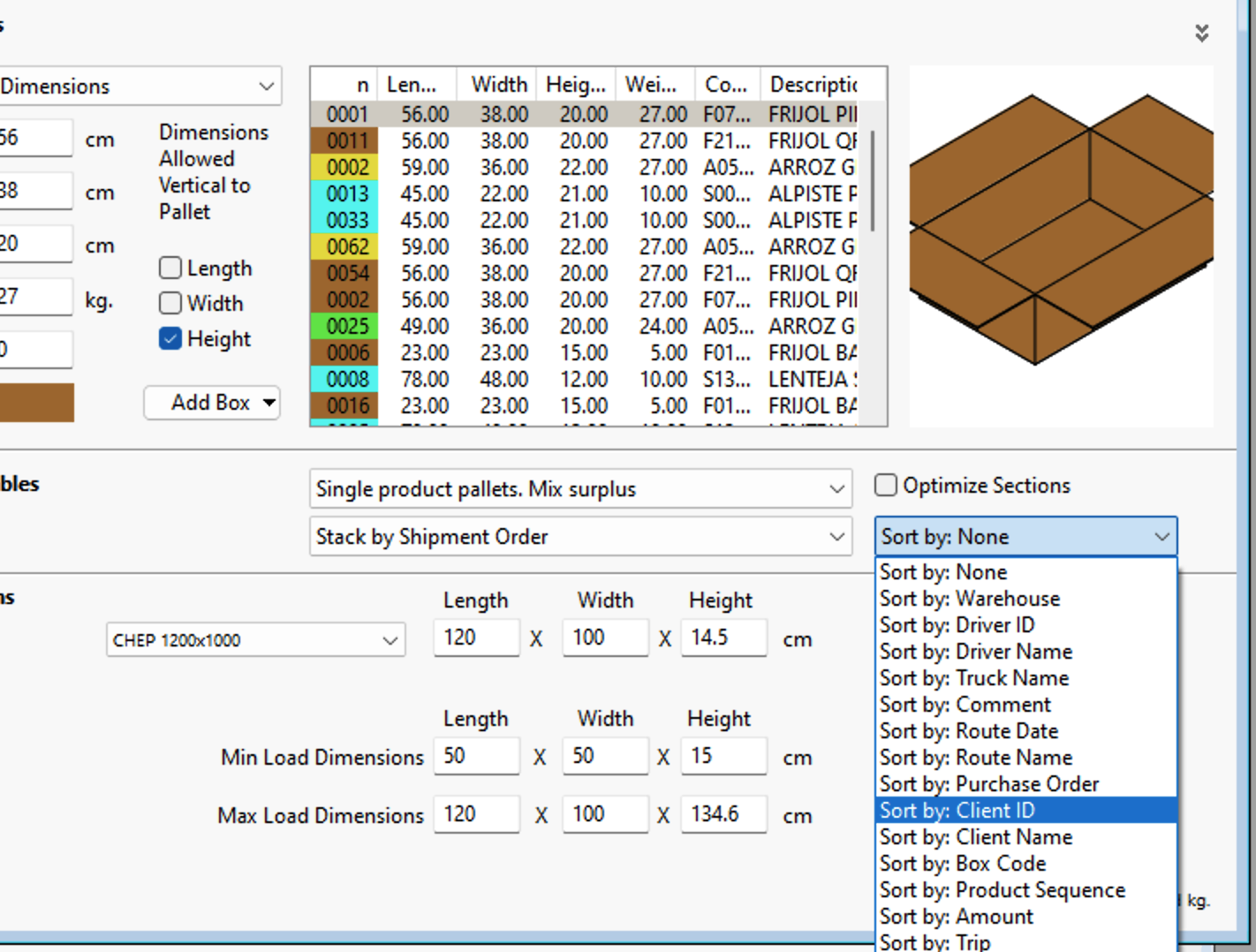
For this example, we will pick two additional optimization parameters to help reduce the number of pallets that will be used. The first one is to check the Optimize Sections box, and the second is to select Stack by Box Weight so that the heaviest items will be placed at the bottom, independently of the order.

To calculate the list of boxes, we select Tools -> Calculate Box Shipment.

We will obtain a list of pallets that should contain all the products in the shipment, ordered by client ID. To generate a report, we select the first pallet in the table at the bottom and then use Edit -> Select All to choose all the pallets in the list.

With all the pallets selected, we choose File -> Print Report to generate the report.
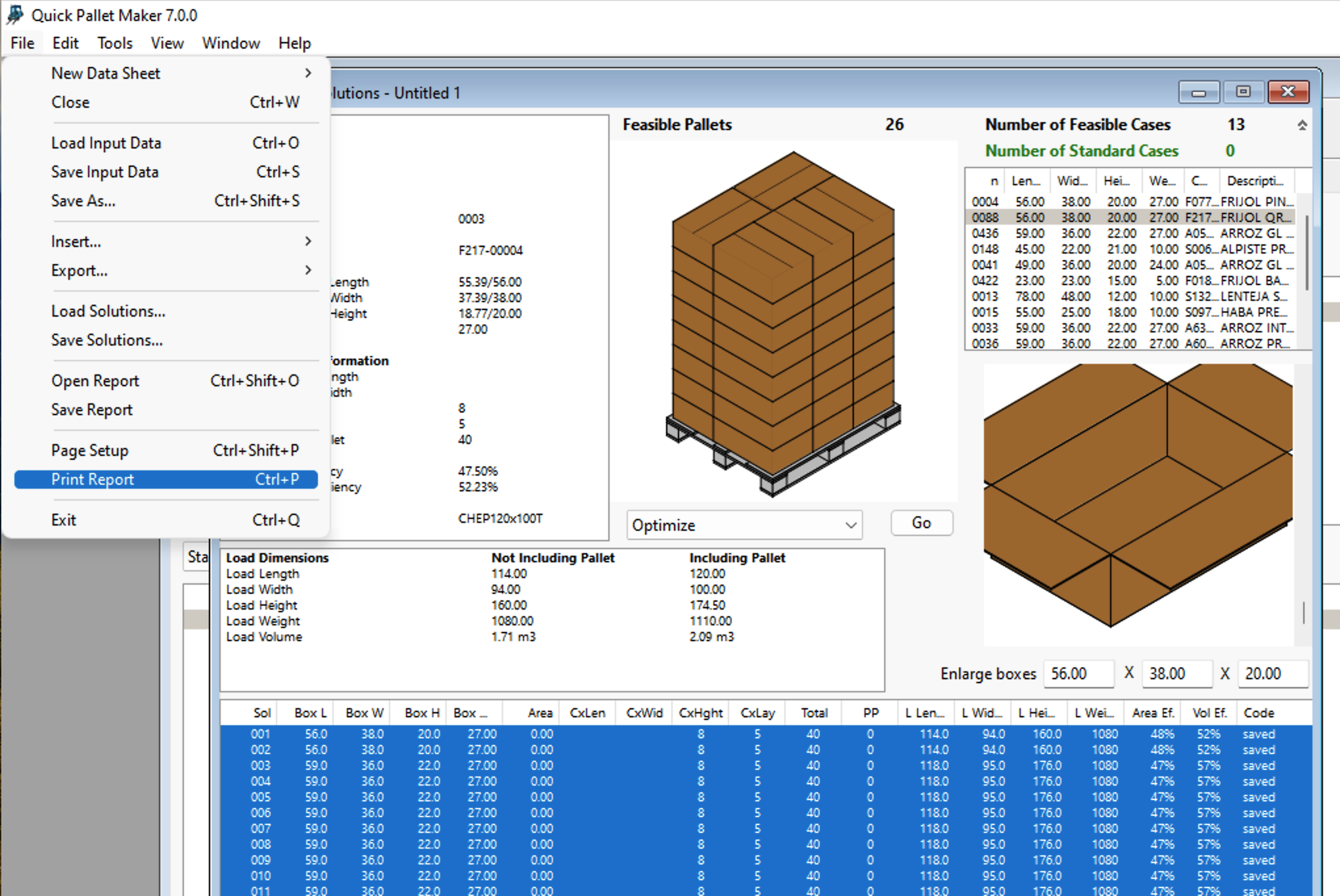
Note that in the list within the report, the pallets have been grouped by clients. Since we are working with different clients, each section will begin with the client ID. The client name will appear in the box description. We select File -> Save Report to save the list of pallets with their drawings.
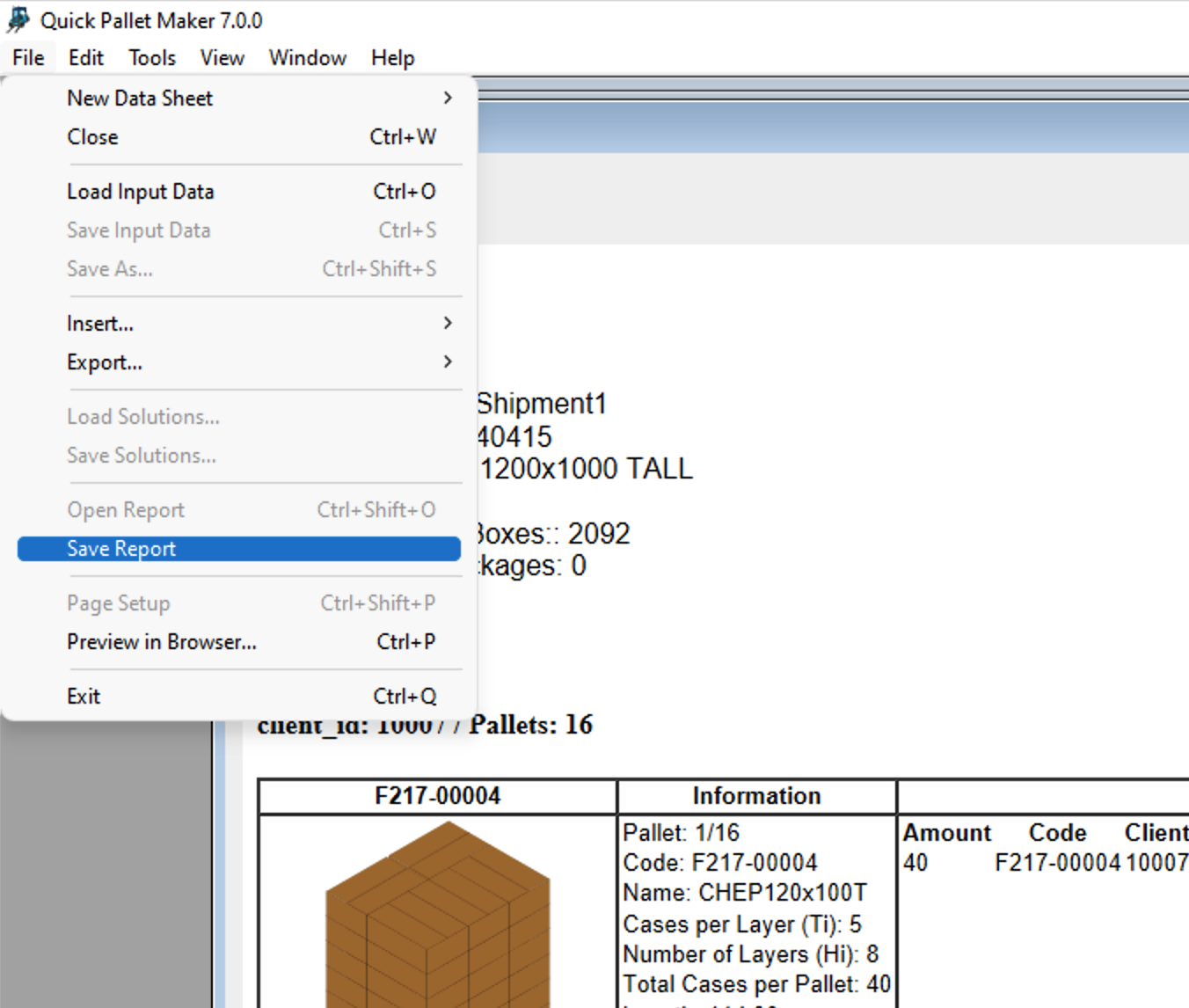
We find a location and save the report with a .html extension.
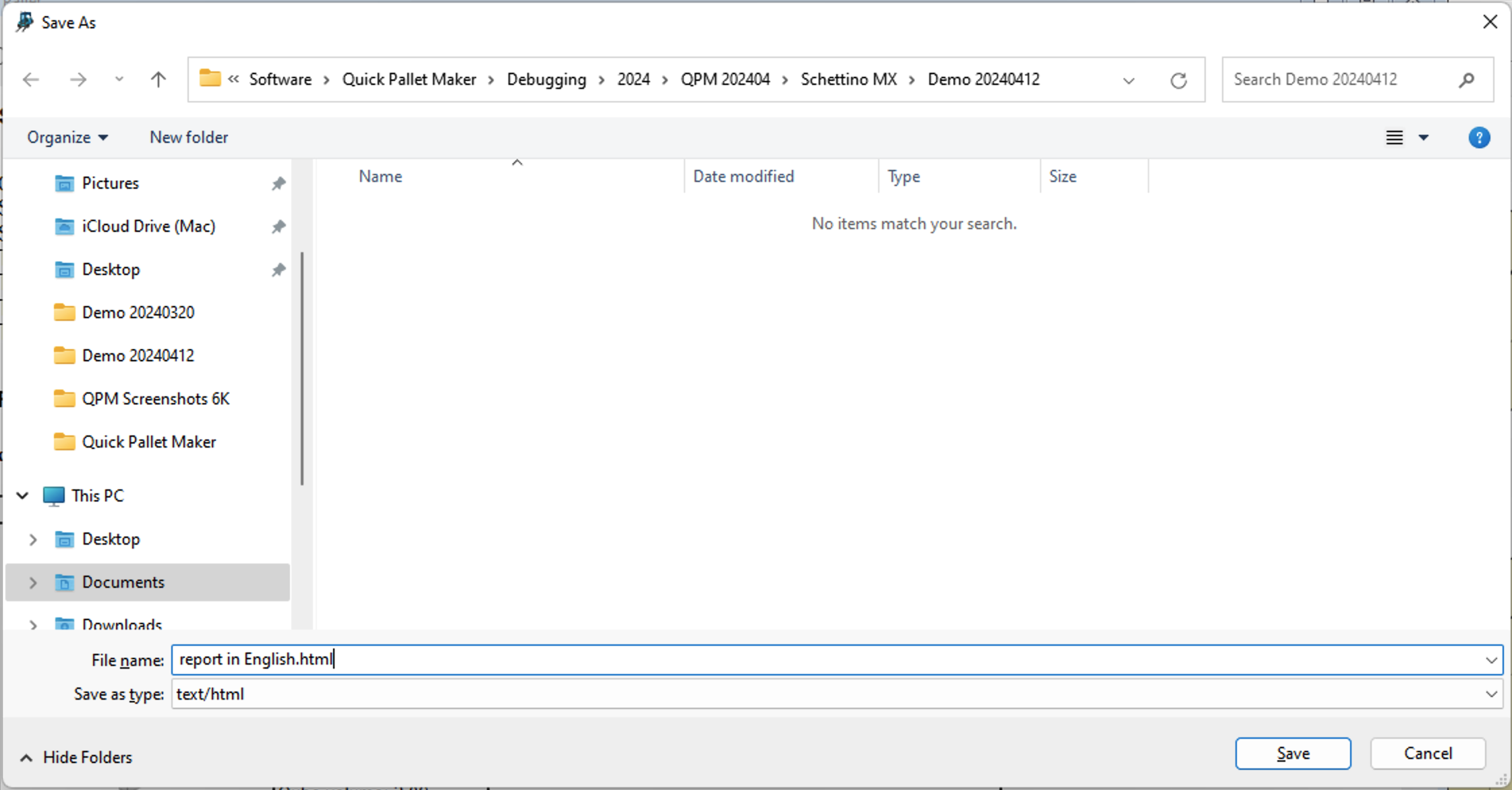
Finally, we can see how the HTML report will look to the people we share it with.
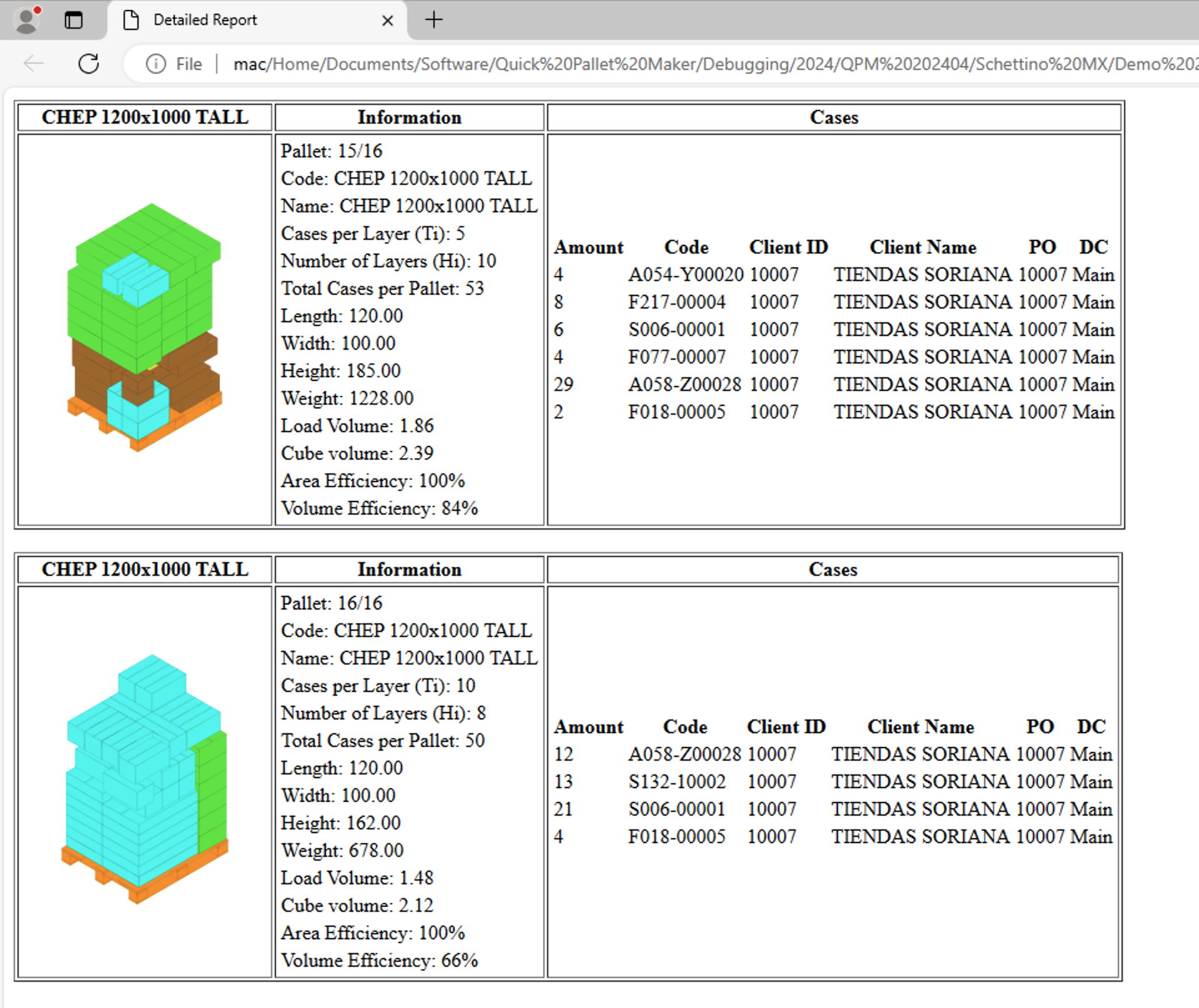
Watch the video
This example is also available as a YouTube video.YouTube Video